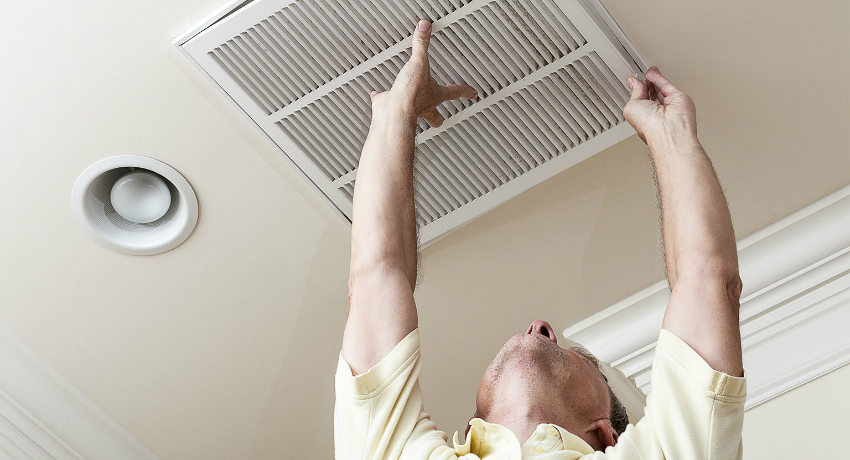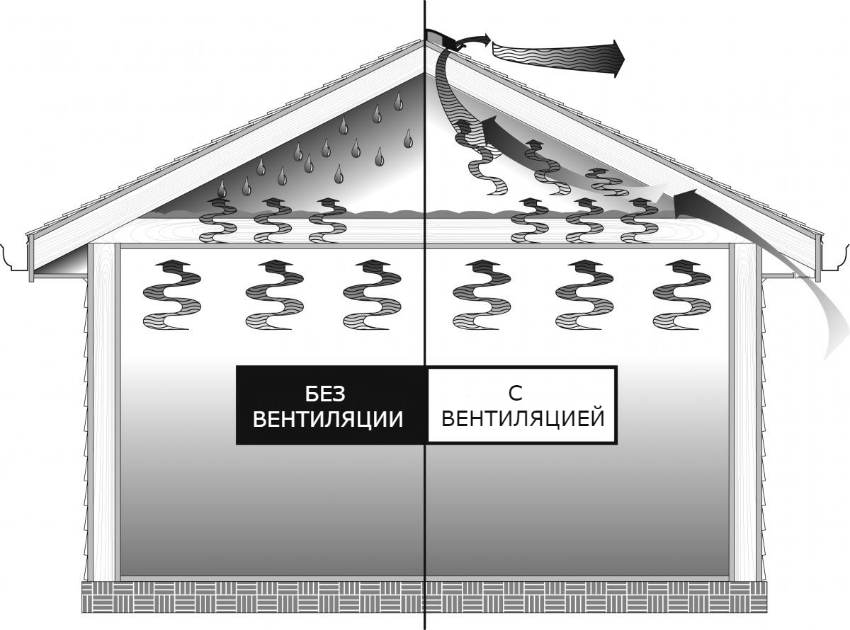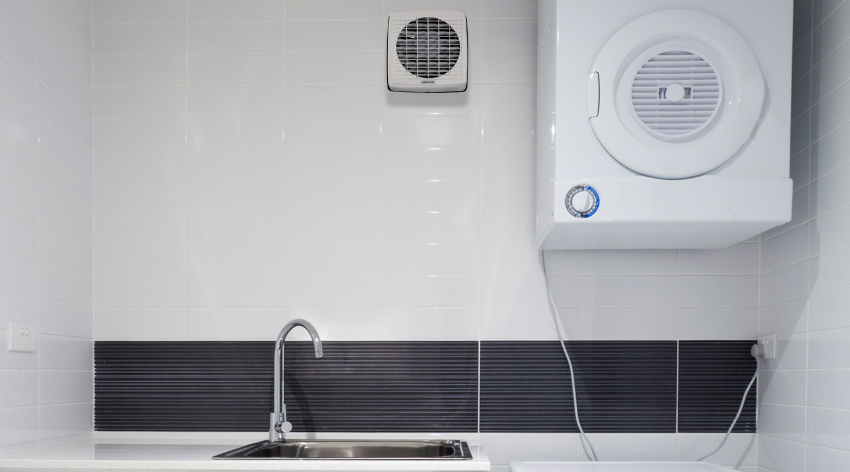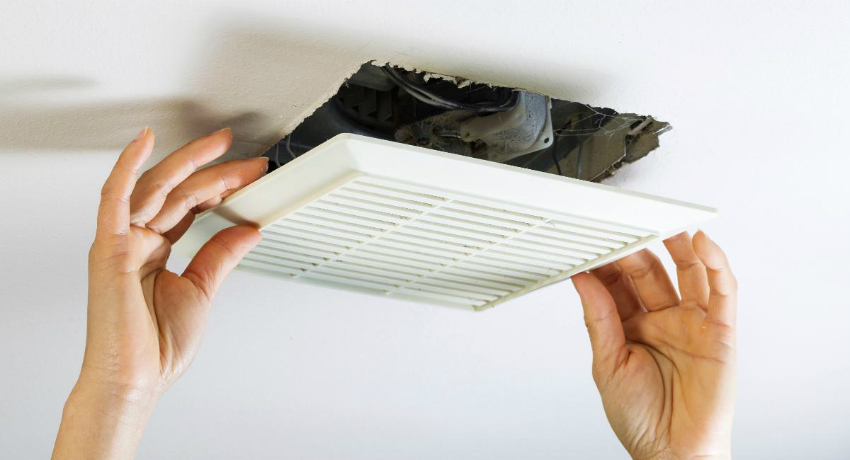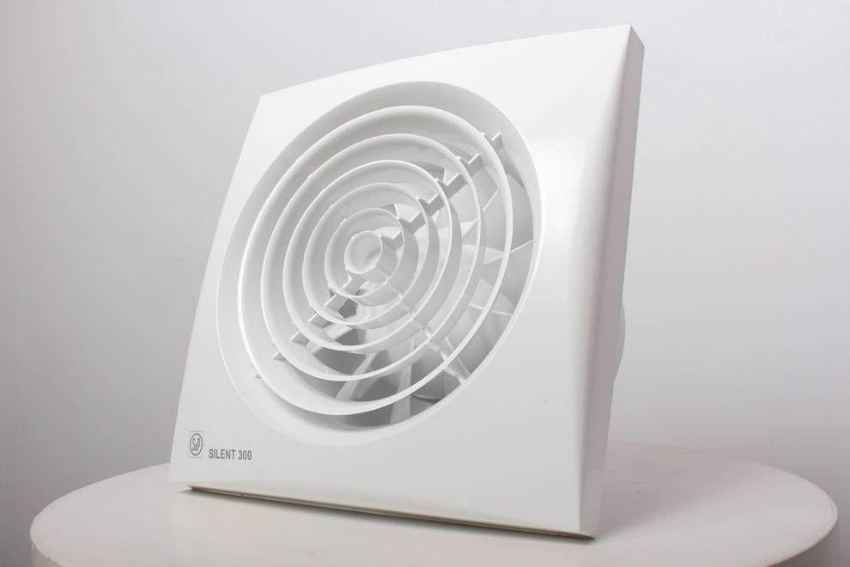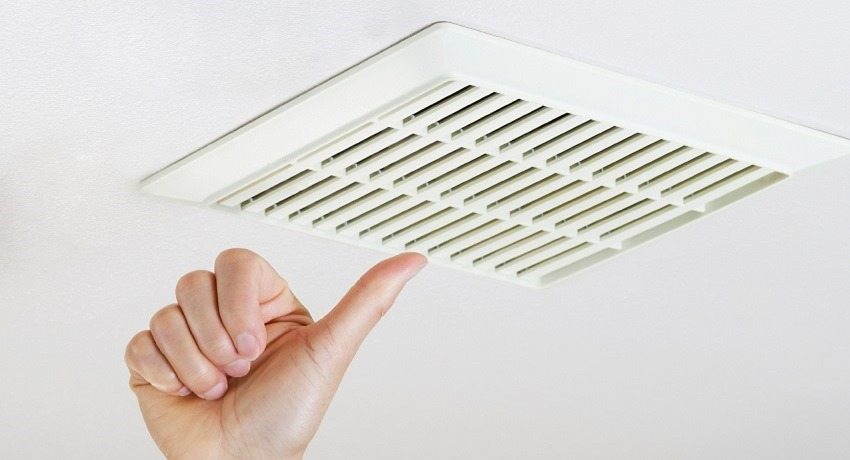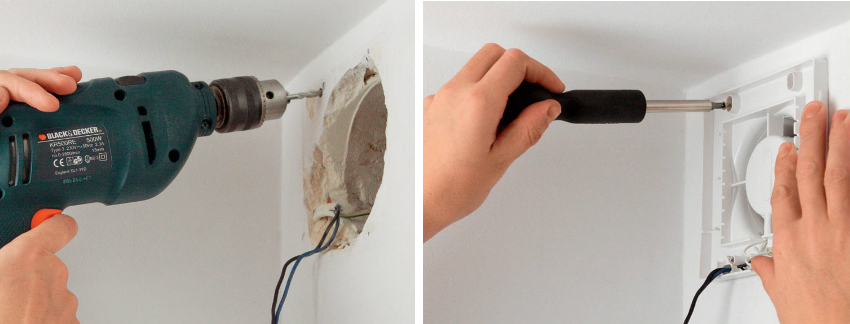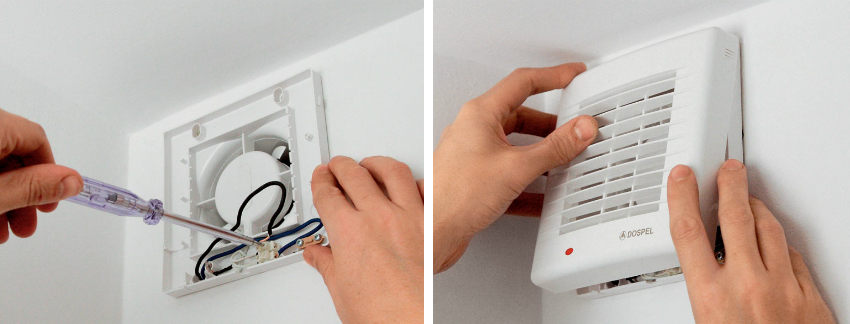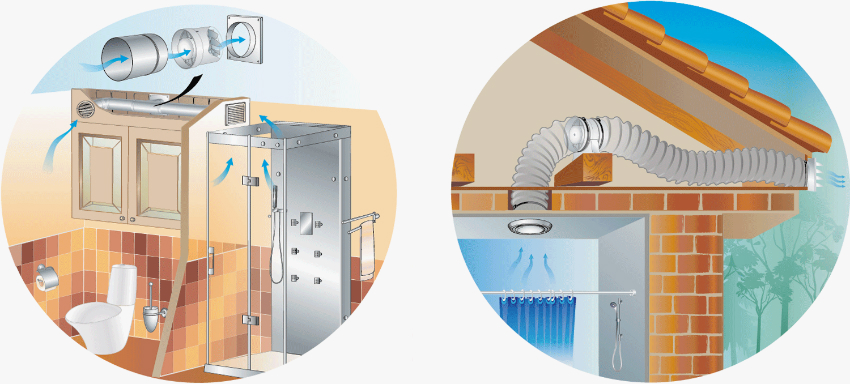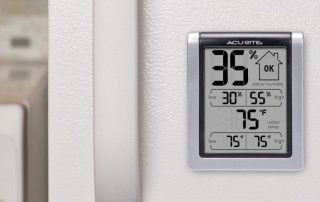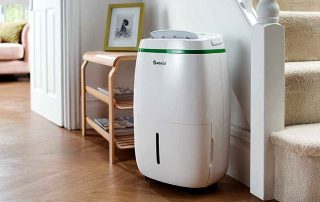Natural ventilation in the bathroom is usually poor. At the same time, this room is characterized by high humidity, which can lead to mold. In order to avoid this, it is recommended to install an extractor fan in the bathroom. These products are of various types and differ in a number of characteristics, however, they are installed quite simply and allow you to maintain a comfortable atmosphere in the room.
Content [Hide]
When do you need a fan
If the air circulation in the bathroom is good, then a fan is unnecessary. Bathroom exhaust fans are needed in the following cases:
- the house is located in a hot climate - at high air temperatures, natural air exchange is minimized, so the installation of a household exhaust fan is simply necessary;

Modern double-glazed windows are hermetically sealed and do not let air into the room, so a ventilation fan is an excellent solution for a bathroom.
- sealed windows and doors - the absence of drafts in the house in this case is a disadvantage, since air does not enter the house through plastic double-glazed windows, therefore, humid air accumulates in the bathroom;
- clogged ventilation - ventilation ducts in many old houses are hopelessly clogged with dirt and dust and without the help of a bathroom fan, air will not be removed through them. It also leads to the formation of mold in the premises and the growth of pathogens;
- high humidity in the bathroom due to the design of the house - if the apartment is located on the ground floor and the basement is regularly flooded, or if you live on the top floor and the attic is constantly leaking above you, then the apartment will invariably have an increased level of moisture. In this case, you simply cannot do without an exhaust device.
If at least one of the above factors is relevant for you, then this means that you need to install a device for forced air circulation in the bathroom.

By choosing a suitable exhaust fan, you can organically fit it into bathroom design
Is it worth buying an exhaust fan for the bathroom: advantages and disadvantages
The main advantage of the device is that its installation will allow you to significantly reduce the level of humidity in the bathroom or toilet. In addition, it is relatively inexpensive, easy to install even without specialized skills and tools, and does not require special maintenance. The disadvantages can be as follows:
- noise during operation of the device - this problem can be easily solved if you purchase a silent fan for the bathroom;
- rather high power consumption during continuous operation - this problem is also solved if you control the operation of the device and do not keep it turned on all the time. A good solution would also be to purchase a model with a timer, which will allow you to set the fan off time;
- the installed fan covers the entire air duct, and when the device is turned off, natural air flow does not occur - in order to solve this problem, it is recommended to install a double ventilation grill.
Useful advice!Whether or not you want to buy a fan for exhausting the bath is up to you. In any case, if the installed device does not meet your requirements, it can be easily dismantled.
What characteristics to look for when choosing a bathroom fan
When buying a duct exhaust fan or another model, you should pay attention to the following parameters of the device.
Performance - this parameter means how much air the fan can move over a set period of time. To calculate this parameter for your bathroom, you need to multiply its volume by the rate of air exchange. The last parameter is constant and depends on the number of people using the room. So, if there are from 1 to 3, then the multiplicity is 6, more than 3 - 8.
Noise level - this parameter should not exceed 35-40 dB. Installing a silent bathroom fan with a non-return valve will help keep noise levels to a minimum. In addition, this problem can be solved by finishing the ventilation passage with materials with a high level of sound insulation.
Instrument safety - Household axial fans and other models are susceptible to short circuits at increased moisture content in the air. Therefore, it is better to give preference to devices that are reliably protected from splashes and are not afraid of water. The recommended protection class for bathrooms is IP44.
The size - Before purchasing the device, measure the ventilation opening. It should be borne in mind that the device should not only freely enter the ventilation channel, but also its outer part should completely cover the ventilation hole.
Appearance - this parameter is chosen exclusively depending on your sense of taste and design of the bathroom. There are a huge number of models on the modern market, so choosing the most suitable one for your interior will not be difficult.
Functionality - the presence of various additional functions. Here you should not get too carried away and choose the most functional device. Choose only those functions that really come in handy, as they affect the price of the exhaust fan.
Additional device functions
Among the useful additional features of the device for forced air extraction are the following:
- power control is one of the most useful functions, as it can significantly reduce energy consumption. The adjustment can be carried out in automatic or manual mode;
- The humidity sensor is another useful function, the presence of which means that the device will turn on only when the humidity level in the room reaches a certain point. Bathroom fans with humidity sensor can also help save energy;
- motion sensor - the fan turns on when someone enters or leaves the bathroom. In this case, the device continues to work for a specified time;
- timer - exhaust fans with a timer are good because you can set the operating time of the device yourself;
- function "constant ventilation" - the device always works at minimum speed and increases the power if the humidity in the room rises. This mode is good if you dry things in the bathroom after washing;
- check valve - if the ventilation hole from your bathroom goes directly to the street, then an exhaust fan for the bathroom and toilet with a check valve will prevent unpleasant odors from entering the room.
Useful advice!It is not recommended to turn on the fan fully automatically. It is better to configure the device to turn off in automatic mode, and make its start controlled.

According to customer reviews, it is better to use a fan with a motion sensor and built-in lighting for the toilet.
Choosing an exhaust fan for a toilet
It is much easier to choose a fan for a toilet than for a bathroom. As a rule, in this room you only need to get rid of unpleasant odors, so you can install the simplest model, which will turn on and off simultaneously with the light in the toilet. For a toilet, a model with a check valve will be very relevant, and the recommended capacity is 50 m / h, provided that the ventilation is functioning normally.
Bathroom hood fan: types and features
Bathroom fans can vary in a number of ways. The first is the type of device mounting:
- Surface-mounted or wall-mounted - mounted directly on the wall. It should be understood that such a model will noticeably stand out against the background of the wall, therefore it is better to install it in a secluded place, hidden from view.
- Built-in - installs directly into the wall. Such a model can be practically invisible, while being much better protected from the harmful effects of moisture and dust than the overhead fan mounting option.
- Ceiling - also built into the ventilation hole, but not on the wall, but on the ceiling. The good thing is that it can organically fit into the interior design of any room, but it clogs up with dust rather quickly, so it needs regular cleaning.
Also, fans are distinguished by design features.
Axial - a feature of the fan of an axial reversible or direct type is that it is made in the form of a blade impeller, which is located in a cylindrical casing. In this case, the fan blades are at a slight angle to the channel axis, and the air drawn in by the device moves along the axis.
In the catalog of axial fans you can find many different models, but they are all low-power, therefore they do not cope well with high humidity in large rooms. Another disadvantage of this option is the increased noise during operation, which can reach 50 dB. Such a model can be mounted directly into the ventilation hole. The price of the axial exhaust fan is slightly lower than that of other models.
Radial - in such a fan, the working part has the shape of a barrel, to which the blades are attached at the same distance from each other. During operation, the blades of the model move air to the inner surface of the device body. In this case, the blades can be bent forward or backward, and in the latter case, this allows the fan to draw in air not from one, but from two sides.This makes it possible to save energy and get rid of moisture more efficiently.
Radial fans are characterized by compact dimensions and low operating noise.
Ducted or centrifugal - some of the newest, but also the most popular models. It is now possible to buy duct fans in any specialized store, and they can be effectively used on an area over 15 m². The advantages of a duct centrifugal fan include high operating power, low noise level, compact dimensions and attractive design.
They are available in various sizes, and the choice of model of the device depends on the parameters of your duct. For example, 125 mm duct fans are mounted in ventilation with a small diameter, while 160 mm duct fans are designed for installation in large air ducts. The disadvantages include the rather high price of duct fans. Mounting such a model is somewhat more difficult than others, since for this it is necessary to completely isolate the device from the walls of the ventilation hole. For this it is recommended to use a layer of corrugated rubber.
Useful advice!Regardless of diameter duct fan (150 mm or more), be sure to place all wires in a special case when installing.
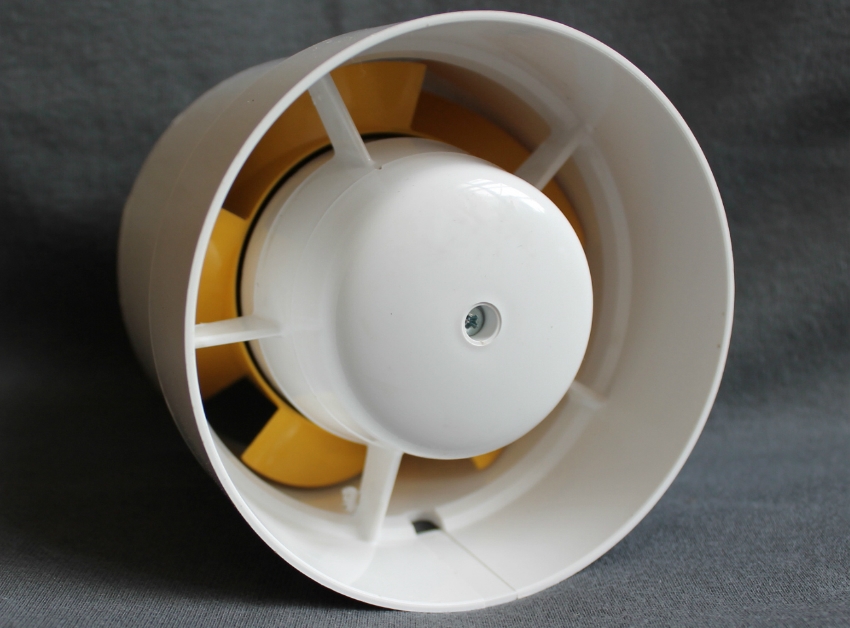
Due to the design features, duct fan harder to mount, but more convenient to use
Installing an exhaust fan in the bathroom
If you decide to buy an axial exhaust fan or any other model, then you can install it yourself without much difficulty. But before proceeding with the installation, there are a few steps to take.
First, you need to check how well your ventilation is functioning. To do this, a lighted match or a sheet of paper must be brought to the ventilation grill. If the flame tilts towards the duct, it means that it is working properly, and if the flame remains stationary, then the ventilation shaft must be cleaned before installing the appliance.
Secondly, there must be a gap of about 2 cm under the door to the bathroom or to the toilet.This is done so that when installing a household axial exhaust fan or another model, fresh air enters the room instead of the device pulls it out of the room ... Otherwise, ventilation will not function.
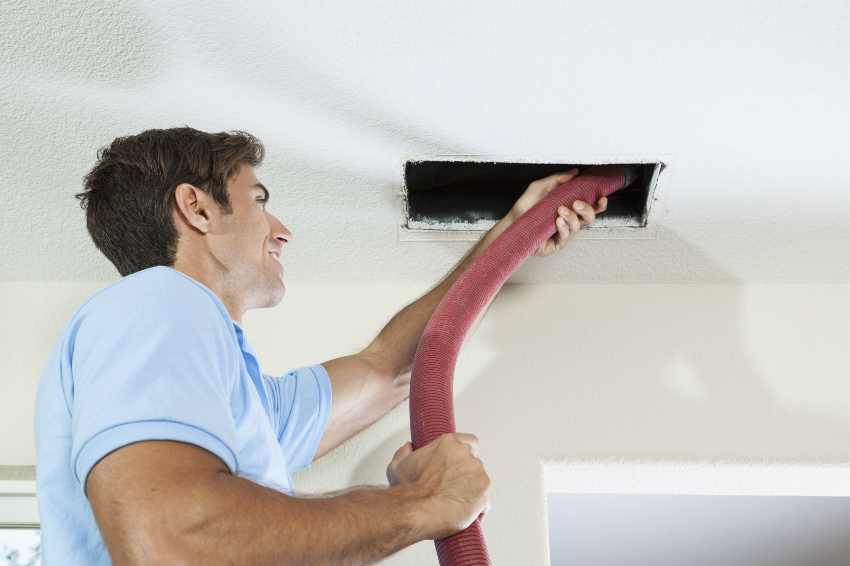
Before installing the fan, make sure that the ventilation is functioning well and not clogged with dust.
Sometimes it happens that the ventilation hole does not fit the selected fan model. In this case, it can be made smaller or, on the contrary, expanded with a hammer and chisel. In the first case, ordinary polyurethane foam is used.
Related article:
Exhaust hood to the bathroom: we eliminate excess moisture
Types and advantages of devices. Choice of equipment. Fan power calculation. Recommendations for self-assembly.
After you have made sure that the hood will function normally, you can start installing the appliance. If you are installing an axial wall fan or another model, then this is done in the following order:
- The front decorative panel of the device is unscrewed and removed. This can be done with a suitable screwdriver.
- Glue is applied around the perimeter of the fan cover. It is best to use special building compounds here, which will not only hold the device securely, but also prevent moisture and dust from entering the ventilation shaft.
- If special holes are provided in the design of the wall-mounted exhaust axial fan, then the device can be fixed using dowels.
- The device is connected to the electrical wiring.Several options are possible here, each of which has its own characteristics.
- To prevent insects from entering your home through the ventilation shaft, it is recommended to install a mosquito net on the fan. It is mounted under the front cover.
- The face cover is installed in place, bolted, or otherwise secured by the design.
Most models come with installation and operating instructions, with which you can easily install yourself in 15-20 minutes. In addition, there are many training videos on the Internet on installing centrifugal exhaust fans or axial models.
Options for connecting the fan to the network
In order to connect the exhaust fan with or without a timer to the mains, only a three-core cable must be used. Connection can be done in the following ways:
- A one-button switch is a good option for a toilet. In this case, the device will turn on and off simultaneously with the lighting. Zero and ground in this case are connected directly, and the phase is after the switch. In the bathroom, this option will not be very convenient, since the insufficiently powerful fan will not have time to cope with the humidity in the room.
- A two-button switch is a convenient option for a bathroom, as it allows you to turn on and off the device for forced air extraction, regardless of the lighting. With this connection, the phase is supplied to the switch from the junction box and is switched to the lighting device and the fan through two contacts. Zero and ground are supplied to the fan and lamp from the box.
- Directly to the lighting fixture - in this case, all wires are fixed in one box: one end of the wire goes to the lighting fixture, and the other to the fan.
In some models of axial overhead fans, as well as in built-in duct fans, there is a built-in switch. This is not very convenient, since the air extraction device is usually installed under the ceiling or in other hard-to-reach places. Before opting for such a model, think about whether it will be convenient for you to reach for the device every time to turn it on and off.
Useful advice!Before starting installation work, make sure that the electricity is turned off.
Installation tips for axial duct exhaust fans and other models
When installing a device for forced air circulation, it is recommended to take into account the following nuances:
- The fan must only be installed in a normally functioning exhaust duct, otherwise the unit will not work properly.
- The device must be installed opposite the door to the room and at the highest possible height from the floor.
- If we are talking about installing an exhaust wall fan or a built-in model in a private house, then you should not vent air into the attic, otherwise condensation may form. The latter will negatively affect wooden structures, which will inevitably lead to the occurrence of rot and mold.
- The best choice for a bathroom fan is a reversible supply and exhaust axial fan. Such models most effectively cope with high humidity, even in large rooms.
- It is best to fix the fan to a wall or ventilation hole using self-tapping screws.
- If the model of your choice is too noisy, but you can reduce the noise level by using a special silicone sealant to secure the fan to the air vent.
Bathroom Fan Care
Duct fans 125 mm and any other models need regular maintenance to extend their service life. First, the device must be systematically cleaned from dust accumulating under the cover. For this, the decorative cover is removed, and the fan itself is cleaned with a vacuum cleaner. Secondly, at least once a year, it is necessary to completely disassemble the device and rinse its plastic parts. Metal parts should be lubricated with machine oil - this will make the movement of the working part easier and reduce the noise level during operation. Pay particular attention to the bearings.
If your fan rattles during operation, weakly draws in air and does not provide the proper level of protection of the room from humidity, then it is worth buying a new model of the device. Prices for this type of devices are not very high, so replacement can be done without large financial costs.
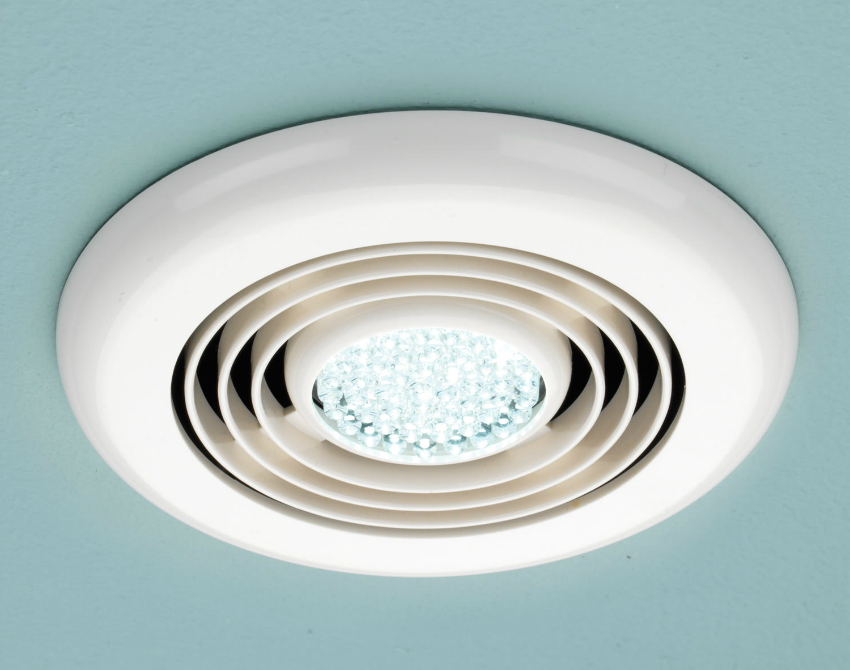
Thanks to a wide range of fan models, you can choose the most suitable option in style and design for the room
The bathroom extractor fan is a compact and relatively inexpensive device that will help you get rid of excess damp in the bathroom, provide air circulation and help solve the problem of high humidity. Its installation and connection to the power grid will not take much time, and this can be done without special skills and tools. Also, such a device will be effective for a toilet, balcony, storage room and many other rooms in which there is a problem with poor natural air circulation.
